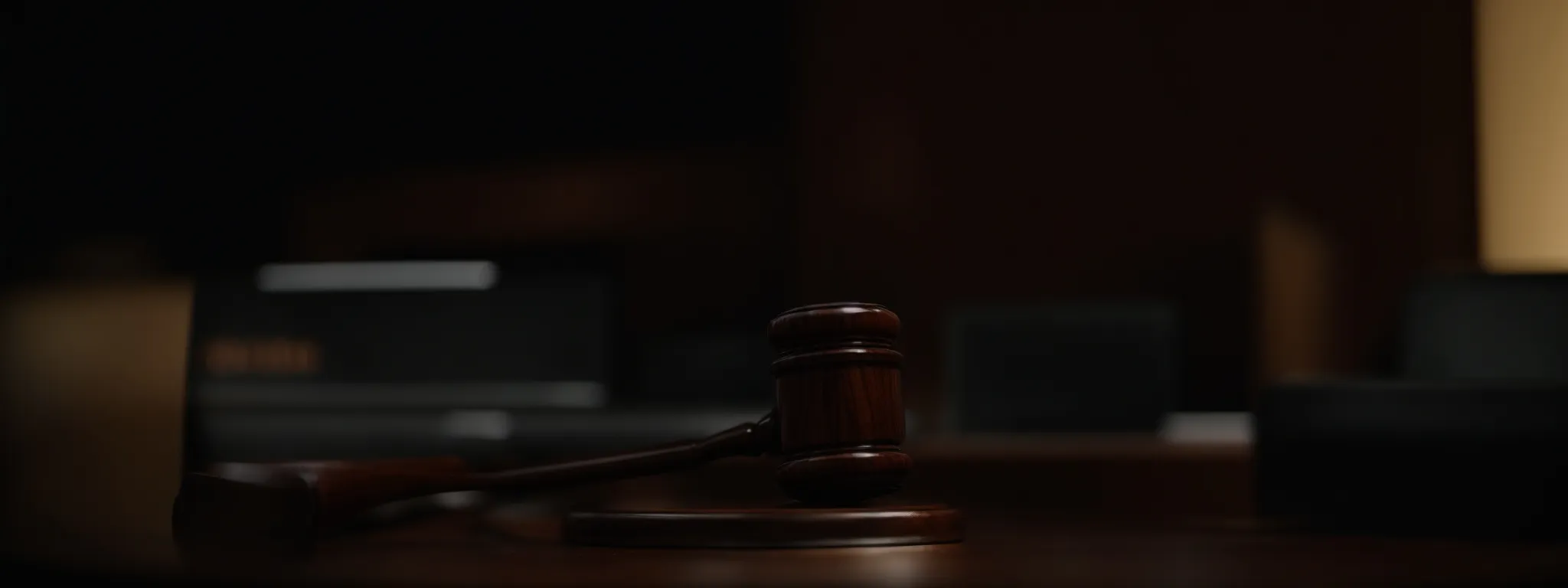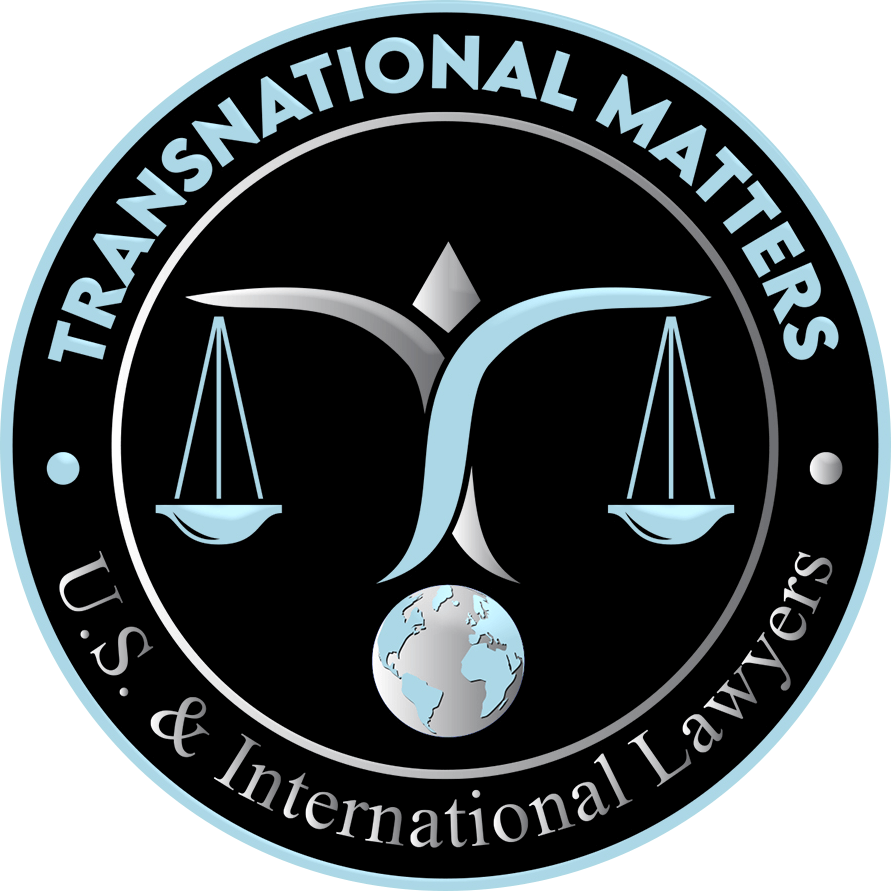Understanding the IBA Rules of Evidence in International Arbitration
In the intricate world of international arbitration disputes, lawyers and law firms must constantly adapt to the evolving landscape shaped by the rule of law and arbitration protocols. The IBA Rules on the Taking of Evidence in International Arbitration stand as a cornerstone, guiding legal professionals in the intricate process of evidence gathering and submission. For those navigating the currents of arbitral tribunal, understanding these rules is as crucial as the skillful presentation of a case itself. These precepts not only streamline proceedings but also bolster the coherence and fairness that the arbitration community cherishes. In this article, we dissect the complexities and nuances of the IBA Rules to equip practitioners with the insight needed to adeptly maneuver through their next arbitration challenge.
Key Takeaways
- The IBA Rules Aim to Harmonize International Arbitration Practices
- 2020 Amendments Focus on Digital Evidence and Cybersecurity
- Rules Provide Clarity on Evidence Admissibility and Assessment
- The IBA Framework Adapts to the Nuances of Different Legal Systems
- Arbitrators Employ IBA Rules to Ensure Equitable Dispute Resolution
Essential Takeaways for Enhancing Gravity Forms Functionality

At the heart of every legal framework lay the twin pillars of fairness and impartiality, and the IBA Rules on the Taking of Evidence in International Arbitration are no exception. Conceived by a dedicated committee of the International Bar Association, the hallmark of this internationally recognized protocol is to provide a blueprint for justice that transcends national boundaries. The aims of the Rules are multifaceted: they outline key objectives that guide arbitration proceedings towards transparent and equitable outcomes, dictate the manner in which evidence is collected and presented by expert witness, and ultimately affect the conduct of international arbitration. In the intricate dance between these Rules and arbitral tribunals, an essential goal emerges — to mitigate conflicts of interest and ensure that all parties are on an equal playing field, thus upholding the integrity of the arbitral process.
Introducing the Key Objectives of the Rules
The IBA Rules on the Taking of Evidence provide a roadmap, ensuring that the rights of all stakeholders are respected throughout the international arbitration procedure. They aim to strike a delicate balance, recognizing the diversity of legal traditions and the varying procedural needs inherent to corporations operating across multiple jurisdictions.
For legal professionals, these Rules form a concerted effort to harmonize international arbitration practices globally, forging a coherent policy that supports the predictability and efficiency of dispute resolution. This initiative reflects an understanding that uniform standards can significantly influence the fairness and speed of arbitral proceedings.
Exploring How These Rules Impact International Arbitration
The arbitral tribunal of international arbitration is significantly shaped by the IBA Rules on the Taking of Evidence, as these guidelines aid in clarifying the roles of gender, among other crucial aspects, within the arbitral proceedings. By advocating for a broadened understanding and respect for gender diversity, the IBA Rules contribute to the more inclusive and sensitive handling of disputes within the sphere of international law, remedying past oversights and fostering a more equitable environment for all participants.
Within the realm of private equity, where the stakes are exceptionally high and often intertwined with issues such as crimes against humanity, the IBA Rules on the Taking of Evidence serve as an instrumental tool. They ensure that the gathering and presentation of evidence adhere stringently to the articulated standard of international arbitration, thus preserving the probative value of evidence and the ethical integrity of the arbitration process.
The Relationship Between the IBA Rules and Arbitral Tribunals
The nuanced interplay between the IBA Rules and arbitral tribunals echoes the broader symbiosis that characterizes the relationship between procedural norms and the autonomy of tribunals in international arbitration. Tribunals, while drawing authority from the international law association, often rely on the framework provided by the IBA Rules to navigate the complexities presented by cases that span diverse legal systems, particularly when parties hail from jurisdictions as varied as England and Wales or those with markedly different legal traditions.
Under the guidance of figures such as Mark Ellis, the IBA’s emphasis on cooperation and consensus building has proved invaluable to arbitrators tasked with asset management disputes. This relationship underscores the flexibility of the IBA Rules in adapting to the specific needs of tribunals, permitting them to tailor the rules to the unique circumstances of each case while maintaining a consistent alignment with international arbitration practice.
Key Changes of the 2020 IBA Rules on the Taking of Evidence in International Arbitration

The 2020 amendments to the IBA Rules on the Taking of Evidence reflect the evolving landscape of arbitration, offering necessary updates that align with the progressing norms of international arbitration. In the wake of high-profile cyber-attacks and the urgency for robust data security, the revised IBA Rules introduce authoritative guidelines aimed at enhancing the safeguarding of digital information. The modifications do not stop there; they extend to refine the procedural approach for obtaining witness testimony and expert analysis, procedures intrinsic to cases ranging from foreign direct investment disputes to those concerning breaches of international humanitarian…. Middle content paragraph here… Ahem, as I was saying, arbitral tribunal s are now equipped with a modernized framework that addresses the complexities of today’s global challenges. These encompass heinous crimes such as genocide, requiring arbitration practitioners to navigate the intricacies of international humanitarian law with heightened precision and sensitivity. Moreover, arbitrators situated in new york city, which has emerged as a hub for international arbitration, are taking a particular note of these changes. The comprehensive reform includes pioneering protocols for remote hearings, a feature that has gained paramount importance in facilitating uninterrupted dispute resolution amidst the realities of travel restrictions and public health concerns.
Overview of the 2020 Amendments
The 2020 amendments to the IBA Rules on the Taking of Evidence introduce critical updates that address the dynamic realm of international arbitration, drawing insights from bodies like the International Court of Justice to refine evidentiary standards and procedures. These modifications introduce clarity and congruence to handling complex international disputes, including those related to competition law, where the cross-border implications often demand meticulous evidentiary scrutiny to uphold justice.
In response to the burgeoning role of alternative dispute resolution in global legal practices, and parallel developments in hubs such as Mexico City, the 2020 revisions to the IBA Rules encompass provisions that reinforce the adaptability of arbitration in the context of employment disputes. Such inclusion marks a pivotal enhancement, ensuring the Rules remain relevant and effective in catering to the evolving demands of international arbitration practitioners and parties alike.
Enhanced Focus on Cybersecurity and Data Protection
The 2020 amendments brought a pivotal shift, as a more pronounced emphasis was placed on cybersecurity and the protection of sensitive data within the realm of international arbitration. Recognizing the paramount importance of digital security, the revised IBA Rules were crafted in concert with expert input from the union internationale des avocats, catering to the exigencies of international trade and its susceptibility to digital breaches.
Entwined with principles of equity, these amendments serve to fortify the digital infrastructure against intrusion, thereby safeguarding the confidentiality of court proceedings. Experts herald this development as a necessary measure, ensuring that the sanctity of information exchanged during international arbitration remains uncompromised and trust in the international arbitral process is upheld.
Adjustments to Provisions on Witness Testimony and Expert Reports
The 2020 revision of the IBA Rules introduced alterations that significantly impact the admissibility and quality of witness testimony and expert reports, a move noted by counsel across the European Union as elevating evidentiary standards. This evolution in protocol is pivotal for ensuring witness credibility and the reliability of expert insights, thereby streamlining the arbitration process and bolstering its adherence to evolved ethical benchmarks.
In regions like Latin America, where international arbitration cases are burgeoning, the updated provisions deliver clarity for both law clerks and arbitrators on procedural expectations. The enhancements delineate the framework for expert witness evidence submission, scrutinizing both relevance and materiality, thus aligning with global ethics to forestall partiality and enhance efficiency in legal proceedings.
New Protocols for Remote Hearings
Recognizing the new horizons in which the judiciary must operate, the 2020 amendments to the IBA Rules on the Taking of Evidence in International Arbitration have introduced protocols that cater to remote hearings. This strategic update addresses the pressing need for an organization of arbitral proceedings that accommodates international participants, especially in complex cases involving intellectual property that span jurisdictions as diverse as Wales and nations governed by the Rome Statute.
The judicious application of these new protocols ensures that even when parties cannot convene in a single location, the arbitration process marches forward with integrity. As a result, arbitrators are now better equipped to handle cases that transcend geographic limitations, maintaining the efficacy and fairness promoted by both the IBA Rules and the underlying principles of international law.
Understanding Common Provisions in the IBA Rules of Evidence

Delving deeper into the IBA Rules on the Taking of Evidence in International Arbitration, it becomes apparent that their framework is vital for legal professionals such as prosecutors, accountants, general counsel, and members of the jury involved in the arbitral process. These rules offer a comprehensive article-by-article breakdown of key provisions, facilitating a clear understanding of what is expected at every procedural juncture. They meticulously outline the methodologies by which fact and expert evidence is to be gathered, allowing for a streamlined and effective approach to compiling the necessary information. Moreover, they delineate criteria regarding the admissibility and assessment of evidence, thus serving as a critical guide for arbitral tribunals in rendering just decisions. With the endorsement of renowned bodies such as the Law Society of England and Wales, these Rules have become an integral instrument in international dispute resolution, providing clarity and consistency across legal systems.
Article-by-Article Breakdown of Key Provisions
In dissecting the IBA Rules on the Taking of Evidence, each provision is carefully examined, revealing intricate details essential for constructing robust legal arguments. Jurisdictions such as Georgia, that strive to harmonize their practices with international standards, find these guidelines instrumental in shaping the treatment of complex cases involving treaty interpretation, commerce disputes, international arbitration and infrastructure project litigations.
The Rules shed light on the nuanced approaches to reaching a judgment, standardizing the process across varied legal landscapes. Participants in arbitration depend on these detailed provisions to navigate through the evidentiary aspects of their cases with greater certainty and precision:
How the Rules Facilitate Fact and Expert Evidence Gathering
The administration of justice under the umbrella of international arbitration is significantly reinforced by the IBA Rules, which adeptly facilitate the collection and evaluation of fact and expert evidence. In doing so, these rules lend vital aid to legal professionals engaged in intricate disputes, ranging from multinational class action lawsuits to cases involving international human rights law. The administration of justice under the umbrella of international arbitration is significantly reinforced by the IBA Rules, which adeptly facilitate the collection and evaluation of fact and expert witness evidence.
Furthermore, the IBA Rules serve as a crucial intermediary, enabling effective gathering and submission of evidence that is pertinent to the adjudication of complex cases in international forums, including those in The Hague. This structured process aligns with global international arbitration standards, providing an equitable foundation for the resolution of disputes underpinned by diverse legal traditions.
Admissibility and Assessment of Evidence Under the Rules
The adjudication of evidence is a critical function in arbitration proceedings, and the IBA Rules offer a framework that arbitrators can employ to determine what evidence is permissible. Legal teams, often leveraging expert witness es from prestigious institutions like the Singapore Management University, rely on these standards to build their cases, ensuring only the most relevant and reliable facts are presented to support a company’s position.
Under the IBA Rules, the assessment of evidence hinges upon its materiality, relevance, and admissibility, which are scrutineered to maintain the arbitral process’s integrity. Entities such as Goldman Sachs and members associated with the American Bar Association acknowledge the value of this meticulous scrutiny in providing a fair contest and informing the tribunal’s final decision.
Admissibility and Assessment of Evidence Under the IBA Rules

The rigorous world of international arbitration demands that every piece of evidence admitted into the tribunal’s review meets distinct criteria to ensure a just trial. The International Bar Association’s (IBA) Rules of Evidence serve as an essential dialogue between the legal entities involved, laying down the foundation for the admissibility of evidence. These rules act as an asset to the practice, enabling arbitrators to effectively filter out irrelevant or immaterial submissions, thereby streamlining the adjudicative process. Focusing on the rich diversity of global legal practices, the IBA Rules are mindful of the varying nuances present in international criminal law, guiding tribunals as they assess the weight and sufficiency of the presented evidence. This process underscores the tribunal’s pivotal role in evidence assessment, where the fine balance between procedural efficiency and fairness is meticulously maintained.
Criteria for Admissibility of Evidence
In the rigorous discipline that is international arbitration, the IBA Rules of Evidence demarcate the boundaries of what constitutes admissible evidence. Their guidelines serve as a bedrock, enabling tribunals to sieve through submissions with a critical eye, ensuring each piece of evidence is both pertinent to the case and instrumental to its resolution.
These rules, recognized for their consultative status among established bar associations, imbue legal proceedings with coherence and credibility. The comprehensive criteria set forth under the International Bar Association Rules are designed not only to permit evidence that serves the truth-seeking process but also to exclude that which may derail the course of equitable justice and also uphold the rule of law.
Techniques for Assessing the Weight of Presented Evidence
The weight of evidence presented in international arbitration demands astute analysis, a skill that is perfected with the guidance of the International Bar Association (IBA) Rules. During sessions at an IBA conference, members often discuss advanced techniques for evaluating evidence’s probative value, drawing from collective expertise to sharpen the expert witness skills of international barristers association members.
Meticulousness is paramount in the international arbitration arena where the aba international law section and the IBA bar closely observe the application of evidence weighting techniques. In scrutinizing presented evidence, arbitrators consider its efficacy in establishing the facts within a legal context, basing their judgment on a well-established set of criteria that encompasses the foundational aspects of international law.
The Tribunal’s Role in Evidence Assessment
The tribunal, during its internship with seasoned arbitrators, absorbs critical tenets of adjudication, such as evidence assessment, which forms the spine of their function in the arbitration process. Their grasp of protocols related to human rights cases or matters overseen by the International Criminal Court influences their assessment techniques within the arbitration arena.
Implementing a rigorous evaluation process, the tribunal meticulously examines the probative value of evidence, drawing on principles akin to those in criminal justice systems. This careful scrutiny is aimed at eradicating prejudicial or irrelevant information that could compromise the pursuit of justice in cases eerily reminiscent of a crime.
The Practical Application of the IBA Rules in Arbitration Proceedings

The meticulous intricacies of international arbitration often unfold within the confines of the hearing room, wherein the IBA Rules on the Taking of Evidence squarely intersect with practical scenarios. A closer examination of these real-world instances offers illuminating case studies that demonstrate the Rules in action, underscoring their pivotal role even within the field of criminal law, where the stakes are undeniably high. As practitioners navigate the terrain laid out by the International Bar Association Rules, they encounter challenges which demand innovative solutions to uphold the equitable administration of justice. By unearthing and sharing best practices, parties and arbitrators alike can aspire to the seamless application of the IBA framework, enhancing the caliber of international arbitration proceedings.
Case Studies Demonstrating the Rules at Work
Courtrooms and conference rooms alike have witnessed the intricate application of the IBA Rules on the Taking of Evidence. In one instance, a complex maritime boundary dispute saw arbitrators meticulously apply Article 3 on Document Production, leading to a concise and well-reasoned award respected by both parties for its fair consideration of the submitted evidence.
In another emblematic scenario, a multi-jurisdictional trade conflict revealed the strengths of the IBA Rules through Article 5 on Witness Testimony. Arbitrators successfully balanced witness credibility with probative value, resulting in a transparent proceeding that exemplified adherence to international standards of justice, arbitration.
Challenges and Solutions in Applying the IBA Rules
In addressing the application of the International Bar Association (IBA) Rules on the Taking of Evidence in International Arbitration, practitioners often confront the dichotomy between legal traditions and the principles enshrined in the IBA Rules. One such challenge arises from the varying degrees of receptiveness towards documentary evidence between common law and civil law jurisdictions, which can lead to differing expectations and interpretations of the Rules.
Solutions lie in fostering a deep understanding of the Rules and their underlying intent among arbitration professionals, coupled with a proactive approach in educating all parties about the Rules’ role in ensuring a fair and efficient arbitral process. By prioritizing dialogue and clarification before and during proceedings, arbitral tribunal can preempt misunderstandings and streamline the evidence-taking process, upholding the spirit of the IBA’s guidance.
Best Practices for Parties and Arbitrators
In international arbitration, it’s imperative for parties to meticulously document their claims and defenses, aligning them with the IBA Rules of Evidence to streamline proceedings. Arbitrators must set clear expectations at the outset, emphasizing the importance of precision and relevance in the submission of evidence to prevent the dilution of arguments and ensure judicial economy.
Furthermore, arbitrators should conduct proceedings with a firm understanding of the IBA Rules, applying them uniformly to foster a sense of fairness and maintain the respect and confidence of all parties involved. This approach will not only aid in the expeditious resolution of disputes but also reinforce the global credibility of the arbitration process.
The Future of Evidence in International Arbitration and the Role of the IBA Rules

The dynamic sphere of international arbitration is perpetually evolving, with the IBA Rules enduring as its constant guiding force. As practitioners worldwide assimilate the modifications enacted in the 2020 amendments, anticipation grows concerning the future trajectories arbitration practices will take. With digital evidence becoming increasingly central to disputes and the acceleration of technological advancements, the IBA’s proactive stance ensures that its Rules remain germane and meticulously aligned with contemporary needs. These Changes, when viewed through the long lens of time, promise to reinforce the IBA’s enduring influence on harmonizing global arbitration practices, signaling a steadfast commitment to shaping a resilient and fair adjudicative landscape.
Anticipating Changes in Arbitration Practice Post-2020 Amendments
The landscape of international arbitration remains ever-adaptive, with the post-2020 amendments to the IBA Rules heralding shifts toward increasingly virtual proceedings and heightened attention to digital evidence management. Legal practitioners anticipate that these changes will cultivate advanced competencies in virtual case management, evidentiary presentation, and cross-border legal collaborations.
As the international legal community continues to ruminate on the broad implications of the 2020 amendments, there is a growing expectation that arbitration practice will evolve to prioritize expedited procedures and data integrity. These developments suggest a future where arbitration becomes synonymous with innovation, and where the IBA Rules further underscore their importance as the cornerstone of procedural efficiency and fairness in dispute resolution.
The Evolving Nature of Digital Evidence and the IBA’s Response
The digitization of global commerce and communication has escalated the volume and complexity of electronic evidence in arbitration. In response, the IBA has rigorously updated its Rules to clarify the admissibility, collection, and preservation of digital evidence, ensuring legal frameworks remain adapted to the virtual age.
Acting preemptively, the IBA has addressed the nuances of electronic document authentication, the security of online transmissions, and the privacy concerns that accompany digital data storage. The 2020 amendments serve as testimony to the IBA’s commitment to providing comprehensive guidance in the ever-shifting landscape of digital evidence in international arbitration.
Long-Term Impacts of the IBA Rules on Global Arbitration Practices
The pervasive adoption of the IBA Rules of Evidence has had a harmonizing effect on the disparate arbitration practices worldwide, establishing a benchmark of consistency vital for the fair resolution of international disputes. This has engendered a level of predictability in arbitral proceedings, allowing parties from different legal cultures to engage with a mutual understanding of the rules guiding evidence gathering and presentation.
Over time, the IBA Rules have become synonymous with best practices in international arbitration, setting the stage for their broader acceptance and embedding within domestic arbitration regimes. As legal systems around the world gradually incorporate elements of the International Bar Association framework, these rules continue to shape the foundational structures upon which the edifice of international arbitration rests.
Conclusion
The IBA Rules of Evidence serve as a critical compass in International Arbitration, fostering fairness, efficiency, and a uniform approach across diverse legal systems. They enhance the integrity and admissibility of evidence while providing clarity and consistency essential for just decision-making by arbitrators worldwide. The IBA’s rigorous framework, especially post-2020 amendments, adeptly addresses contemporary challenges such as digital evidence management. Ultimately, these rules underpin the credibility and predictability of international arbitration processes, cementing their role as indispensable guidelines in global dispute resolution.


